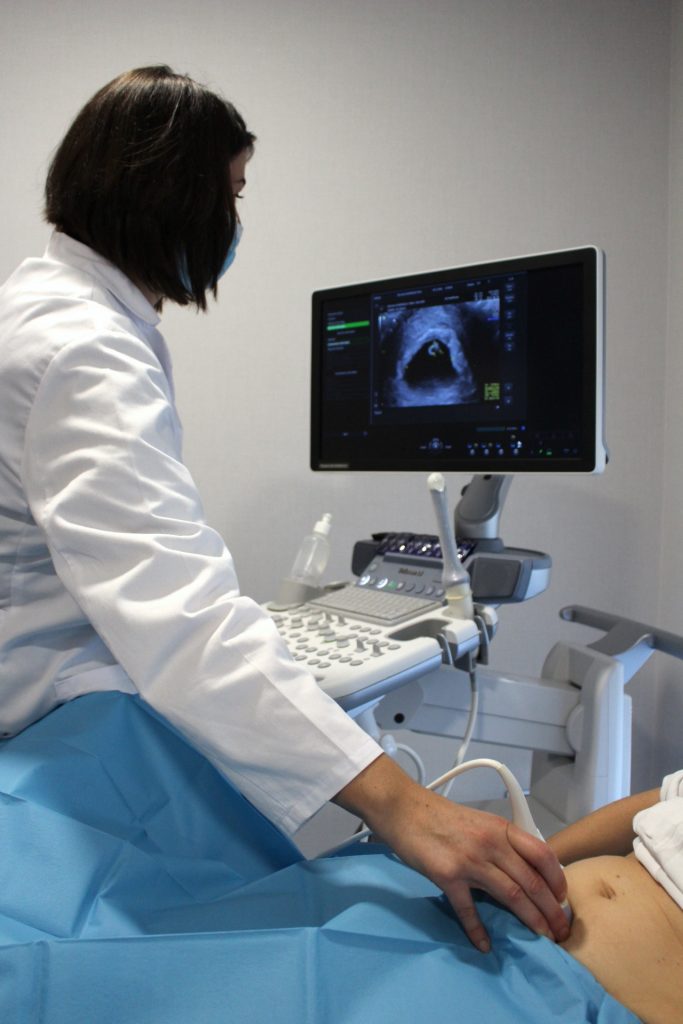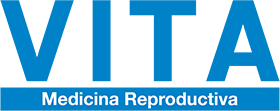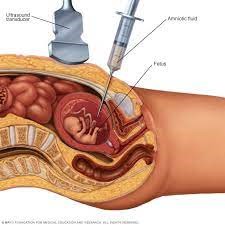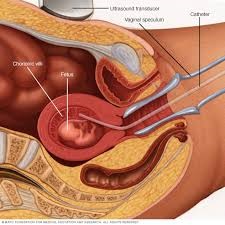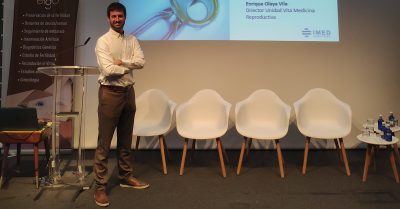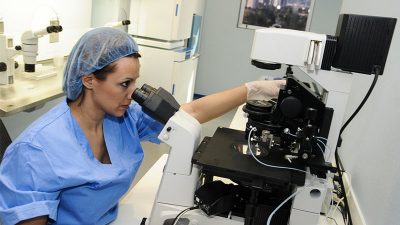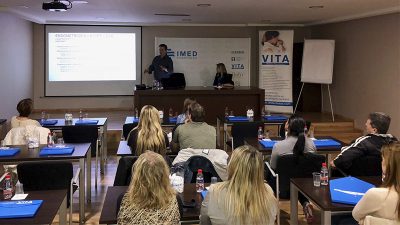Maternal-Fetal Medicine Unit
Once the long-awaited pregnancy is achieved, a new stage begins. At VITA, we will accompany you throughout this pregnancy, so that both the mother and her baby reach the end with complete normality.
In this unit, pregnancy monitoring is provided, in a personalized way, with highly qualified professionals, equipped with state-of-the-art technology, and with the added value of being located in the hospital environment provided by IMED.
Pregnancies achieved after Assisted Reproduction techniques, although they do not have associated a greater number of complications, should be considered of a certain risk, especially due to the woman’s history: long-term sterility, previous abortions, gynecological pathology. And the fact that most of them are of advanced maternal age also has an influence.
Therefore, an obstetric control more exhaustive and complementary obstetric than the usual one would be advisable.
The VITA Maternal-Foetal Medicine Unit can assist you in these circumstances:
This is the consultation that every woman who decides to start seeking a pregnancy should have. It aims to achieve a healthy pregnancy for her and her future baby, and reduce possible risks.
What is this consultation about?
The aim is to know in detail the family and personal history of the patient and her partner. After, a gynecological examination is performed and a basic analysis is requested.
Advice is given on pregnancy and healthy eating, exercises, and work. And iodine and folic acid supplements are indicated, at least one month before the patient starts seeking pregnancy.
It is especially important if this woman suffers from a chronic disease or if she takes medication.
To whom is the preconception consultation indicated?
In general, it would be advisable for all women wishing to become pregnant to have this consultation.
It would be essential in cases such as:
- woman advanced in years
- Women with bad obstetric histories: miscarriages, fetal deaths, previous malformations, etc.
- Couples with a family or personal history of hereditary diseases
- Women affected by chronic or serious illnesses
Prenatal Diagnosis is the set of diagnostic techniques aimed at knowing exactly the correct formation and development of the fetus before birth.
What are the congenital anomalies?
These are anomalies that occur during the development of the fetus and manifest after birth. They occur in 3% of all newborns.
They are divided into three categories:
- Malformations: they represent the majority of cases, with 60%. Its diagnosis can only be made through the use of ultrasound scanning.
- Genetic diseases: they are 28%, and their diagnosis is given with the DNA study.
- Chromosomal anomalies: in the remaining 12%, the most frequent and well-known anomaly being Trisomy 21 or Down Syndrome.
What Prenatal Diagnosis techniques are there?
We classify them into Invasive and Non-Invasive:
Non-Invasive Prenatal Diagnostic Techniques: they enable us to detect the population at risk for a congenital anomaly. To achieve it we have:
- Detailed clinical history. It allows us to detect possible increased risk in cases of advanced maternal age, history of anomalies, carriers of a known disease, etc,
• Analisis: general or specific tests. The most widely used in recent years is the Non-Invasive Prenatal Test or Cell Free Foetal DNA Test (cffDNA). Anomalies in the number of fetal chromosomes are detected through it, from the 10th week of gestation, by means of a simple blood draw from the mother. Reliability is very high, very close to 100%. Therefore, it is progressively displacing the so-called First Trimester Combined Screening, which consists of the combination of data obtained through ultrasound scans and analisis, only detects anomalies on three chromosomes, 21, 13 and 18 and is 85% reliable.
• Ultrasound scans, an always essential examination in the field of prenatal diagnosis. It must be performed by qualified staff and with high-end ultrasound equipment. Although it can be performed at any time during pregnancy, there are two key moments for the detection of fetal anomalies:
• At week 12: it allows us to analyze markers that alert us of chromosomal anomalies, Nuchal Translucency, Nasal Bone and Ductus Venosus Flow Wave among others;
• At week 20: aimed at ruling out most fetal malformations. It is therefore the most important ultrasound scan.
Invasive Prenatal Diagnostic Techniques: they enable the confirmation of the case if faced with the appearance of any risk factor found through the non-invasive techniques mentioned above. The most used are:
- Chorionic Villus sampling (CVS). It is performed abdominally or preferably transcervically, at weeks 11 and 12. A small sample of the placenta is retrieved, enabling the study of the fetal chromosomes and even molecular studies.
- Amniocentesis. It is practiced from the 15th week of gestation. Through an abdominal puncture, amniotic fluid is retrieved from where fetal cells that allow fetal chromosome study are.
*In both techniques, more in-depth studies can also be carried out with the samples obtained. That is the Array-CGH, molecular studies that analyze the individual’s genome, to rule out certain genetic anomalies.
At VITA, we are by your side at any time during your pregnancy, ready to answer any questions that may arise, whether the pregnancy was achieved after assisted reproduction treatments or naturally.
We can also offer complimentary visits to check the correct health of the mother and the baby.
How often are pregnancy visits made?
The number of visits and their frequency will depend on the type of pregnancy. In most of them, monthly consultations are sufficient and in the last month, they could be weekly. If it is a pregnancy classified as “High Risk”, the rhythm of visits should be more frequent.
Which analyses are carried out?
Usually one is done each trimester. In the first one, a basic blood and urine analysis is performed, and various antibodies are also determined to rule out infectious diseases and finally the Chromosomal conditions Test: the First Trimester Combined Screening or the cffDNA.
In the second trimester, the Oral Glucose Tolerance Test (OGTT) is performed, intended for the diagnosis of gestational diabetes.
And in the third trimester, coagulation tests are added and finally the Streptococcus detection test.
Which ultrasounds are performed?
They are performed on all visits, it is a basic examination. In the first weeks, we check various parameters:
- Intrauterine pregnancy and gestational age
- Vitality of the embryo in its initial phases
- Number of embryos
- Markers of chromosomal anomalies
As the pregnancy progresses, it helps us to:
- Rule out malformations
- Control of the placenta
- Correct development of fetal weight
And in the last few weeks:
- Fetal position
- Your oxygenation, through the Doppler study
Childbirth, postpartum period and lactation
Childbirth is the culmination. At IMED Hospitales, you will be able to find the complete human team that will assist you in this long-awaited moment: gynecologist, midwife, anesthetist and pediatrician. And this in its own and well-known hospital environment, with comfortable facilities and state-of-the-art technology.
After childbirth, the postpartum period or quarantine begins. Logically, whenever possible, breastfeeding is advised.
And finally, the routine follow-up check-up is to be had approximately after a month and a half.
Sometimes, pregnancy is considered high risk. And those achieved after fertility treatments, although they do not have more added risks, are generally considered to need more exhaustive care.
When is it considered a High-Risk pregnancy?
There are many situations in which a pregnancy can be considered as high-risk. Among them the following:
- Women with illnesses prior to pregnancy, the most common being hypertension and diabetes.
- Bad previous obstetric history, such as repeated miscarriages, fetal death, fetal malformations, premature births or growth delays.
- Causes that arise in the course of the current pregnancy: growth retardation, threat of premature birth, signs of placental insufficiency, hypertension, diabetes, etc.
- And if in the end your pregnancy has been classified as at risk, at VITA we offer specialized consultations in its Maternal-Foetal Medicine Unit, in order to carry out more complete controls and try to achieve a successful pregnancy and delivery.
High-Risk Obstetric Unit
It is made up of a multidisciplinary team: gynecologist, geneticist, pediatrician, midwife, anesthetist. All of them integrated in the same IMED Hospital. And counting on high technology: high-end ultrasound equipment, monitoring, own laboratories and operating theaters.
Specific and serial controls are carried out, depending on the case, and therefore always with personalized care.
And on many occasions, complimentary consultations to those of the usual gynecologist are requested and given, either because some complication arises or simply to confirm an adverse finding.
The usefulness of ultrasound scans during pregnancy is undoubtedly to check the proper development of the fetus. With the introduction of new technologies in the current equipment and specifically the third-dimension, we find a new and interesting aspect when observing the fetal face and its numerous gestures with great definition.
It is what has been called Emotional Ultrasound Scans, because with it, and this immediately, a great bond is created between the future parents and this fetus. Feelings of happiness and tranquility are transferred and affective ties are clearly increased.
Three-dimensionally, the fetal features are shown with great precision. And if we add to this the fourth dimension, that is, active movement, we instantly identify easily recognizable movements and facial expressions. This transmits to parents unforgettable moments, memories and images that they will never forget.
And, furthermore, the study of these facial gestures and their quantification serves as further proof of fetal well-being, they are specifically linked to good neurophysiological development.
It is performed with the high-end ultrasound equipment that VITA has. It can be carried out at any time of the pregnancy, although it is preferable in its second half. The quality of the images depends, however, on several factors: the position of the foetus, the amount of amniotic fluid, but especially on the experience of the doctor performing the examination. And the entire study can be stored digitally and thus provided to future parents.
A great psychological help is therefore given by this type of ultrasound scans. As we say, the emotional bond increases and will last forever.
